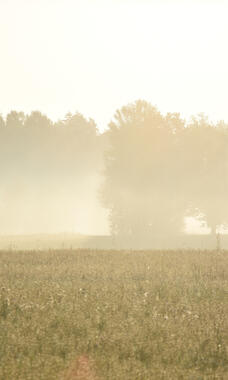For most school children and staff, the second largest contributor to their radon exposure is likely to be their school. In 2021, the Vermont legislature passed a law requiring all schools to test for radon.
News Release: Vermont DEC Issues Air Quality Alert for Thursday
PRESS RELEASE For Immediate Release – June 29, 2023 Contact: Bennet Leon, Air Quality Planning...
Polychlorinated Biphenyls (PCBs) in Schools
PCBs are a group of human-made chemicals that can cause serious health problems. Vermont has...
Climate Change and Drought
Climate Change is Impacting Drought in Vermont Drought is a prolonged dry period caused by...
Winter Weather
One of the best ways to improve our mental and physical health during the winter...
What Should You Test?
The Health Department Lab tests for radon, blue green algae and for bacteria in water.
Best Practices and Resources
The Envision Program best practices are intended to provide school administrators, nurses, maintenance and building...
Radon in Schools
For most school children and staff, the second largest contributor to their radon exposure is...
Envision Program
Poor indoor air quality in schools has been linked to decreased student and teacher performance...
Pests and Bed Bugs
Using Pesticides in Your Home Pests in and around our homes can be a nuisance...
Mold
Mold needs moisture to grow. Due to Vermont’s humid climate, mold is commonly found in...
Carbon Monoxide
Carbon Monoxide in Your Home Carbon monoxide (CO) is a poisonous gas you cannot see...
Radon
One in seven Vermont homes has unsafe levels of radon. Radon is a naturally occurring...
Indoor Air Quality
Air Quality in Your Home National studies have shown that air pollution in our homes...
Heart Attacks
Investigators both in the U.S. and abroad have shown relationships between short- and long-term exposure...
Air Quality
Outdoor air can contain pollutants. Air pollution has been linked to specific health problems—such as...
Carpet Chemicals
Chemicals in Carpets Most carpet is made with synthetic (human-made) materials. However, carpets can also...
Mercury
At room temperature, metallic mercury is a shiny, silver-white liquid. Breathing in vapors of metallic...
Particulates
“Particulate” is a general name given to a tiny solid or liquid particle or piece...
Ozone
Ozone is a colorless gas with a noticeable smell. Although ozone is naturally found in...
Benzene
Benzene is the name of an aromatic hydrocarbon, C 6H 6. In liquid form, benzene...
Arsenic
Arsenic is a natural element found in rocks and soil and is often found in...
Volatile Organic Compounds
Volatile organic compounds, or VOCs, is the name given to substances that contain carbon and...
Formaldehyde
Formaldehyde is a colorless gas at room temperature that sometimes has a noticeable smell.
Take Action on Climate Change
Responding to climate change will benefit health now.
Air Quality Alerts, Wildfires & Your Health
Air Quality Can Affect Your Health When the amount of pollution in the air increases...

Volatile organic compounds, or VOCs, is the name given to substances that contain carbon and evaporate or “off-gases” at room temperature.
The Envision Program best practices are intended to provide school administrators, nurses, maintenance and building services staff with tools to use when planning for renovations, preventative maintenance, pest management and control, monitoring of drinking water, and other building activities.
Arsenic is a natural element found in rocks and soil and is often found in well water. It can also come from human activities and is used in some consumer products. Over time, arsenic causes cancer along with other health...
Benzene is the name of an aromatic hydrocarbon, C 6H 6. In liquid form, benzene is clear, colorless, and flammable.
Ozone is a colorless gas with a noticeable smell. Although ozone is naturally found in the atmosphere, it is also a main part of air pollution called smog.
“Particulate” is a general name given to a tiny solid or liquid particle or piece of matter. It usually refers to particles in the air (airborne particulates).
At room temperature, metallic mercury is a shiny, silver-white liquid. Breathing in vapors of metallic mercury can cause health effects.
Chemicals in Carpets Most carpet is made with synthetic (human-made) materials. However, carpets can also be made of wool or other natural materials. Most carpet has at least two parts: the cushion or pad for support and noise reduction, and...
Outdoor air can contain pollutants. Air pollution has been linked to specific health problems—such as asthma, heart disease, and lung cancer.
